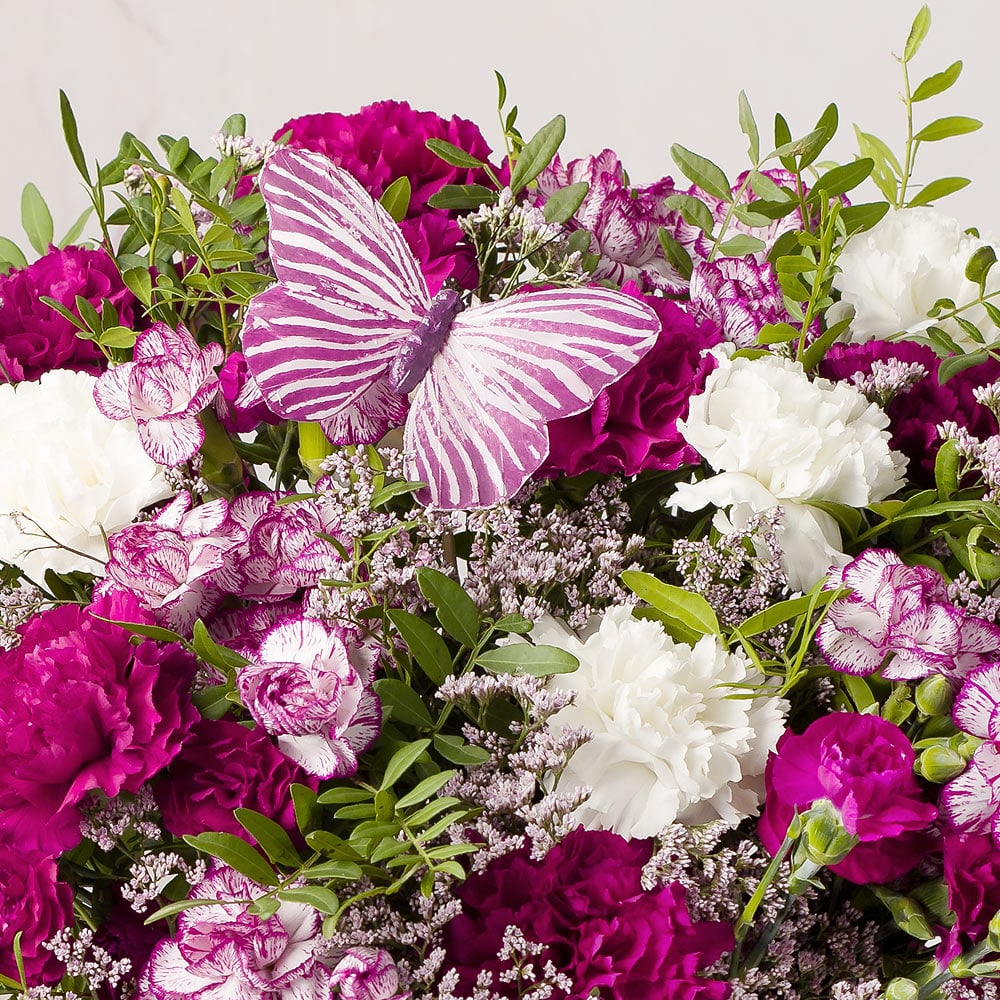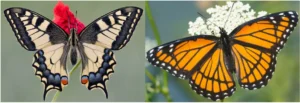Mollflowers are a unique and captivating plant species that have intrigued gardeners, botanists, and nature enthusiasts for centuries. Whether you’re a seasoned gardener or a curious novice, understanding Mollflowers can add a touch of beauty and diversity to your garden. In this article, we’ll explore everything there is to know about Mollflowers—from their origins and characteristics to growing tips and their role in culture and folklore.
What Are Mollflowers?
Defining Mollflowers
Mollflowers belong to a fascinating genus of flowering plants that are known for their striking appearance and resilience in various environments. These plants are recognized for their vibrant flowers that come in a wide range of colors, from deep purples to bright yellows. But what truly sets Mollflowers apart is their ability to thrive in conditions where many other plants might struggle.
Origin and History
Discovery of Mollflowers
The discovery of Mollflowers dates back to ancient times, with evidence of their cultivation found in various archaeological sites. Originally found in remote regions, these flowers were prized for their beauty and were often used in ceremonial practices.
Traditional Uses of Mollflowers in Various Cultures
Throughout history, Mollflowers have been used in traditional medicine and as ornamental plants in gardens and religious ceremonies. Different cultures have attributed various symbolic meanings to these flowers, often associating them with purity, strength, and resilience.
Characteristics of Mollflowers
Physical Appearance
Mollflowers are known for their unique structure, which includes a robust stem and intricate petal arrangement. The flowers themselves are often trumpet-shaped, with petals that can be smooth or ruffled, depending on the variety.
Flower Shape and Color Variations
The color palette of Mollflowers is one of their most striking features. From soft pastels to bold and vivid hues, these flowers offer something for every taste. Some varieties even exhibit bi-colored petals or interesting patterns, making them a favorite among hybridizers.
Growth Patterns
Mollflowers are versatile plants that can adapt to various growing conditions. They are typically perennial, meaning they will return year after year with proper care. Their growth pattern includes a dormant period, during which the plant conserves energy for the next blooming season.
Soil and Climate Requirements
For optimal growth, Mollflowers prefer well-drained soil and a climate that offers moderate temperatures. They are known to tolerate drought better than many other flowering plants, making them an excellent choice for gardens in arid regions.
Unique Features
One of the most notable features of Mollflowers is their fragrance, which can range from subtle to intensely aromatic. This scent plays a significant role in attracting pollinators, such as bees and butterflies, which are essential for the plant’s reproduction.
Types of Mollflowers
Common Varieties
There are numerous varieties of Mollflowers, each with its own unique characteristics. Some of the most popular include the Mollflower Maxima, known for its large, showy blooms, and the Mollflower Alba, which is prized for its pure white flowers.
Popular Mollflower Species
Some species, like the Mollflower Magnifica, are known for their towering height and vibrant colors, making them a standout in any garden. Others, like the Mollflower Compacta, are smaller and more suited to container gardening.
Rare and Exotic Types
While many Mollflowers are readily available, some rare and exotic types are sought after by collectors and botanical enthusiasts. These species may require specific growing conditions and are often found in specialized nurseries.
Endangered Mollflower Species
Certain Mollflower species are endangered due to habitat loss and over-harvesting. Conservation efforts are underway to protect these plants and ensure their survival for future generations.
How to Grow Mollflowers
Preparing the Soil
Before planting Mollflowers, it’s essential to prepare the soil to ensure it provides the right nutrients and drainage. Mollflowers prefer slightly acidic to neutral soil with plenty of organic matter.
Best Soil Types for Mollflowers
Loamy soil is ideal for Mollflowers as it retains moisture while allowing excess water to drain away. Adding compost or well-rotted manure can improve soil quality and encourage healthy growth.
Planting Mollflowers
When it comes to planting, you can start Mollflowers from seeds or transplants. Seeds should be sown in early spring, while transplants can be planted once the danger of frost has passed.
Seeds vs. Transplants
Growing Mollflowers from seeds allows for a more extensive variety selection, but it requires patience, as germination can be slow. Transplants, on the other hand, offer a quicker start and are often more resilient.
Caring for Mollflowers
Mollflowers are relatively low-maintenance, but they do require some care to thrive. Regular watering, especially during dry spells, is crucial to their success.
Watering and Fertilization Tips
Mollflowers should be watered deeply but infrequently to encourage deep root growth. Fertilize with a balanced fertilizer in the early spring and mid-summer to promote healthy blooms.
Pruning and Maintenance
Pruning is essential to keep Mollflowers looking their best. Deadheading spent flowers will encourage new blooms, and cutting back the plant in late fall helps prepare it for the next growing season.
Benefits of Growing Mollflowers
Aesthetic Value
Mollflowers add a burst of color to any garden, making them a popular choice for borders, beds, and containers. Their long blooming season ensures that your garden remains vibrant for months.
Environmental Benefits
Growing Mollflowers is not just about beautifying your space—they also provide significant environmental benefits. These plants attract pollinators, which are vital for maintaining healthy ecosystems.
Attracting Pollinators
The fragrant flowers of Mollflowers are a magnet for bees, butterflies, and other pollinators. By planting Mollflowers, you’re contributing to the survival of these essential creatures.
Medicinal and Herbal Uses
Mollflowers have been used in traditional medicine for centuries. They are believed to have anti-inflammatory and antiseptic properties, making them a valuable addition to your herbal medicine cabinet.
Common Pests and Diseases
Identifying Mollflower Pests
While Mollflowers are generally hardy, they can fall victim to various pests. Common culprits include aphids, slugs, and caterpillars, which can damage the leaves and flowers.
Common Insects Affecting Mollflowers
Aphids are particularly troublesome for Mollflowers, as they can stunt growth and cause yellowing of the leaves. Regular inspections and prompt treatment with insecticidal soap can keep these pests at bay.
Disease Prevention and Treatment
Mollflowers are susceptible to several diseases, including fungal infections like powdery mildew and root rot. Proper spacing, good air circulation, and avoiding overhead watering can help prevent these issues.
Fungal Infections
Fungal diseases are often caused by poor air circulation and excessive moisture. To prevent them, water the base of the plants and avoid wetting the foliage.
Bacterial and Viral Threats
While less common, bacterial and viral infections can also affect Mollflowers. These are often spread by pests or contaminated tools, so it’s crucial to practice good garden hygiene.
Propagation of Mollflowers
Seed Propagation
Propagating Mollflowers from seeds is a rewarding process, but it requires patience. Seeds should be sown in a well-prepared seedbed and kept moist until germination.
Vegetative Propagation Methods
For quicker results, vegetative propagation methods such as cuttings, division, and layering can be used. These methods allow you to produce new plants that are genetically identical to the parent plant.
Cuttings and Division
Taking cuttings from healthy Mollflowers and rooting them in a suitable medium is a common method of propagation. Division involves splitting a mature plant into several smaller plants, each with its own root system.
Layering Techniques
Layering involves bending a low-growing branch of a Mollflower to the ground and covering it with soil. Over time, roots will develop from the buried section, and it can be severed from the parent plant and transplanted.
Harvesting and Using Mollflowers
Best Time to Harvest
The best time to harvest Mollflowers is early in the morning when the blooms are fully open and at their most fragrant. This is also when the flowers contain the highest concentration of essential oils.
Uses in Landscaping
Mollflowers are versatile in landscaping, serving as focal points in garden beds, border plants, or even as ground cover in larger areas. Their vibrant colors and long-lasting blooms make them a favorite among landscape designers.
Culinary and Herbal Applications
In addition to their ornamental value, Mollflowers can be used in the kitchen. Some varieties are edible and can be used to garnish salads or desserts, adding both color and flavor.
Mollflowers in Culture and Folklore
Symbolism of Mollflowers
Mollflowers have been imbued with symbolic meanings in various cultures. They are often associated with purity, resilience, and transformation, making them a popular choice for ceremonies and celebrations.
Mollflowers in Art and Literature
These flowers have also found their way into art and literature, where they are depicted as symbols of beauty and strength. Paintings, poems, and stories often feature Mollflowers as central themes.
Festivals and Celebrations
In some cultures, Mollflowers are celebrated during specific festivals, where they are used to decorate homes, temples, and public spaces. These festivals often include rituals that honor the flower’s symbolic significance.
Environmental Impact of Mollflowers
Role in Ecosystems
Mollflowers play a crucial role in their native ecosystems, providing food and habitat for various wildlife species. They contribute to biodiversity and help maintain the balance of local ecosystems.
Conservation Efforts
Given the environmental pressures on some Mollflower species, conservation efforts are essential. Organizations are working to preserve natural habitats and protect endangered species from extinction.
Protecting Endangered Species
Protecting Mollflowers from habitat destruction and over-harvesting is critical to their survival. Conservation programs often involve cultivating endangered species in botanical gardens and reintroducing them to their natural habitats.
Tips for Buying Mollflowers
Choosing Healthy Plants
When buying Mollflowers, look for plants that are healthy and free from signs of disease or pests. Healthy plants will have vibrant foliage, strong stems, and no visible damage.
Reliable Sources for Purchase
It’s essential to buy Mollflowers from reliable sources to ensure you’re getting high-quality plants. Both online nurseries and local garden centers can be good options, but each has its pros and cons.
Online vs. Local Nurseries
Online nurseries often offer a wider selection of Mollflower varieties, including rare and exotic types. However, local nurseries allow you to see the plants in person before purchasing, which can help you choose the healthiest specimens.
Popular Myths and Misconceptions
Debunking Common Myths
There are several myths surrounding Mollflowers, such as the belief that they are difficult to grow or require constant care. In reality, Mollflowers are quite hardy and can thrive with minimal attention.
Understanding the True Nature of Mollflowers
By debunking these myths, we can appreciate Mollflowers for what they truly are—resilient, beautiful plants that can enhance any garden with their presence.
Conclusion
Mollflowers are more than just a pretty addition to your garden; they are a symbol of resilience, beauty, and nature’s adaptability. Whether you’re planting them for their aesthetic appeal, environmental benefits, or cultural significance, Mollflowers are sure to enrich your gardening experience. With the right care and attention, these flowers will reward you with their stunning blooms year after year.







Be First to Comment